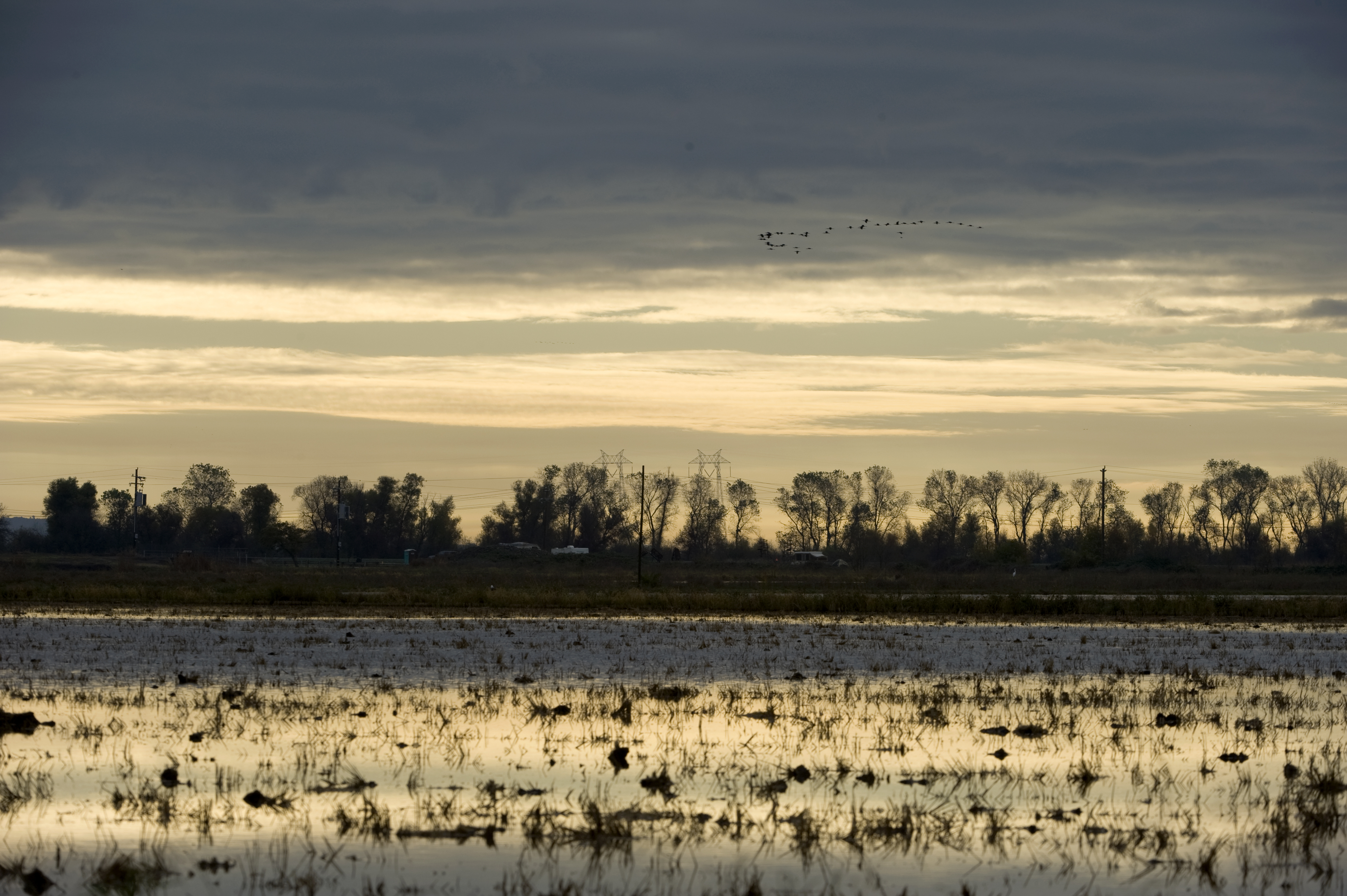The ability to recharge groundwater is receiving increased attention in California.
The Legislature in the 2014 Sustainable Groundwater Management Act (SGMA) found that “sustainable groundwater management in California depends upon creating more opportunities for robust conjunctive management of surface water and groundwater resources. Climate change will intensify the need to recalibrate and reconcile surface water and groundwater management strategies.” Furthermore, the Legislature expressed its intent “to increase groundwater storage and remove impediments to recharge.” (Water Code §10720.1)(g).)
Looking forward, sustainable groundwater management will thus be dependent in large part on the effective management of surface and groundwater supplies in an integrated manner. This includes the recharge of groundwater–either directly or through in-lieu opportunities–by maximizing the availability and use of surface water supplies.

Photo Brian Baer
Anticipating storms, the Governor on Friday in his new Executive Order provided that: “To demonstrate the feasibility of projects that can use available high water flows to recharge local groundwater while minimizing flooding risks, the State Water Resources Control Board and California Regional Water Quality Control Boards shall prioritize temporary water right permits, water quality certifications, waste discharge requirements, and conditional waivers of waste discharge requirements to accelerate approvals for projects that enhance the ability of a local or state agency to capture high precipitation events this winter and spring for local storage or recharge, consistent with water rights priorities and protections for fish and wildlife.”
There are also several exciting programs underway in the Central Valley:
- A recent study conducted by scientists with University of California, Davis and the University of California Cooperative Extension investigated the value deliberate winter flooding of fields during rainy years would have in recharging groundwater in California. According to the study, “flooding agricultural land during fallow or dormant periods has the potential to increase groundwater recharge substantially….” See the earlier blog at: UC Study of Winter Flooding to Recharge Groundwater Shows Promise.
- The Almond Board of California is working with Sustainable Conservation to work with San Joaquin Valley farmers to accept flood flows from storms to help replenish groundwater, California’s underground “savings account,” for dry seasons. The Sacramento Area Council of Government (SACOG) is also beginning a similar study and analysis in the Sacramento metropolitan area.
Additionally, water resources managers have and will continue to explore various ways to recharge groundwater and conjunctively manage water in this manner. Although the Legislature stated its intent to facilitate recharge, it now needs to take the next step by providing the tools to implement the overarching principle in the California Constitution “that the water resources of the State be put to beneficial use to the fullest extent of which they are capable.” (Art. X, §2.) This includes removing impediments to recharge.



